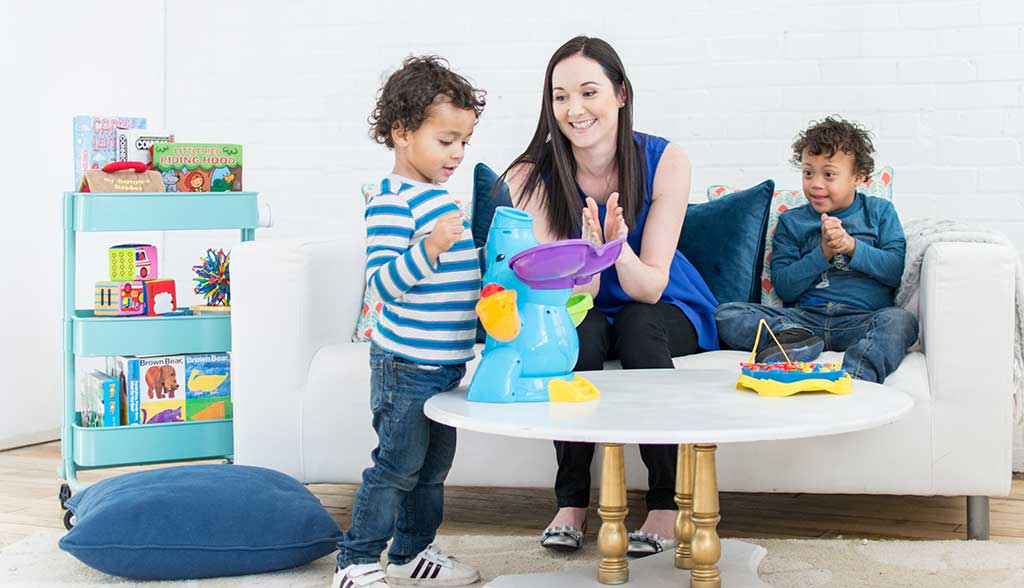
- May 29, 2018
- Language
Language Facilitation Techniques
One of the questions I always get asked when I see new parents is, “What can I do at home to help my child learn language?” For kids with language delays, it’s important to get help from a Speech-Language Pathologist but it is equally important that parents learn some strategies to help their children when we aren’t there (because we can’t always be there).
I’ve provided a list of some great language facilitation techniques. These can be used with all children who are learning language, whether there is a delay or not.
Use lots of language and different types of language: Take advantage of all opportunities to talk with your child. These include bath time, changing/dressing, in the car, and during feedings. Position yourself so that you are at the child’s level and that they can see your face. Use lots of facial expression and expression in your voice. Also, use lots of different words, not just nouns to label things. Use action words (eat, sleep, push, squeeze) and descriptive words (soft, hot, big, sticky) to describe what you are doing and what you see, feel, and hear. Use location words, such as up, down, in, on, under, out. Don’t forget to label feelings and use lots of fun sounds like “Yucky,” “Pop,” “Oink,” “Uh Oh.” Kids love these words and respond to them.
Get down to the child’s level: as mentioned above, face-to-face communication is best. Have fun, crawl on the floor, do tummy time with them, imitate what they are doing. If they lie down to play, you lie down too.
Pause to allow your child to take a turn: this allows children to have an opportunity to communicate. During peek-a-boo stop and wait for them to ask you to do it again or see what they want to do. Maybe they don’t want to play anymore. Some may take a turn, or some may grab your hands to get you to do it again. When you are singing repetitive songs like “If Your Happy and You Know It” or “Old MacDonald” pause at the parts that are repetitive, at the end of a line and let your child fill it in with actions or words. You can also imitate actions and sounds that your child makes and encourage them to copy you. You can do this by imitating them but changing it up a little and see if they copy you. Turn taking, an important for later communication in conversation.
Provide choices and wait for a response (look, sound, reach, touch, words): give a child a choice between two things. Hold up the object (apple or banana), label them, watch for a response, and label the one they choose. Remember, kids may not always choose correctly so you may have to do this a few times.
Follow the child’s lead: kids will enjoy engagement more if they are doing what they want to do rather than what you want them to do.
Repeat what your child says and add a word: If a young child says “car,” model it back and add a word (fast car). If they say “big car,” you can say “big fast car,” and so on…
Communicative Temptations: give kids a reason to communicate. Don’t always interpret what they want: Give them unopened food packages so that they have to ask for help, or say “open.” Put things up high so they need to point and ask for it. Put toys in a closed container. This may cause frustration at first and you want to accept any communication attempt but as your child gets more comfortable at communicating expect more communication from them.
There are lots more strategies to use. You can find more suggestions on www.hanen.org.
If you have any concerns regarding your child’s speech-language development please speak to your family doctor, self refer to your local Preschool Language Program, or contact a private Speech-Language Pathologist.

